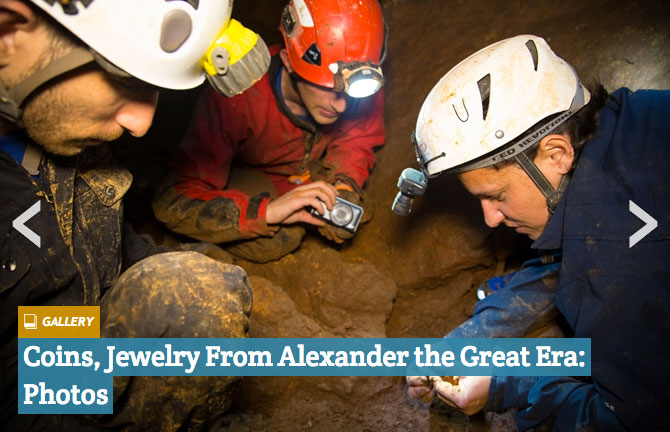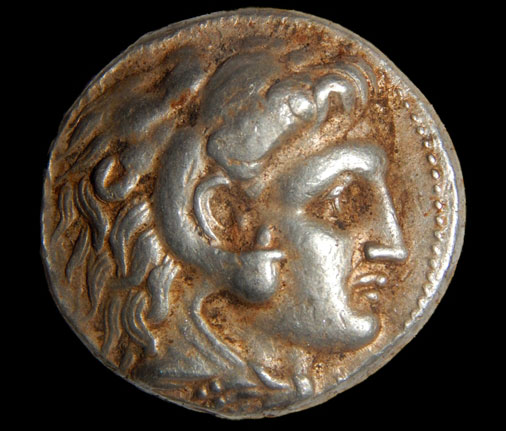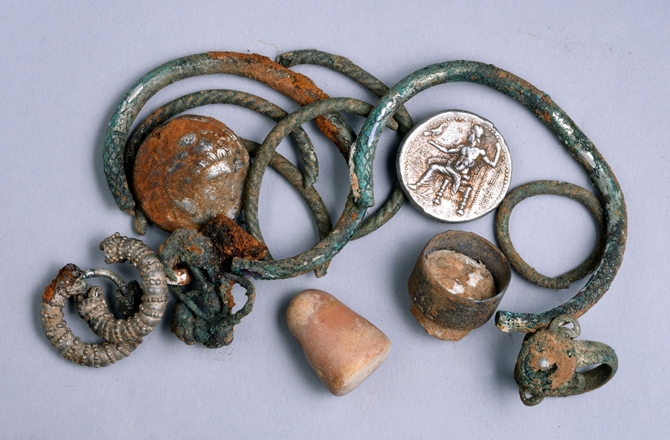News.Discovery.com | By Rossella Lorenzi | March 9, 2015

A rare cache of jewelry and silver coins, minted during the reign of Alexander the Great, has been discovered in a stalactite filled cave in northern Israel, the Israel Antiquities Authority (IAA) announced on Monday.
The 2,300-year-old treasure was found by three members of the Israeli Caving Club who wriggled through a narrow passage at the entrance of the stalactite cave and wandered inside for several hours.

Alongside the coins, the spelunkers found the remains of a cloth pouch with three rings, four bracelets, two decorated earrings, three other earrings, probably made of silver, a small stone weight, and a clay oil lamp.
Dating from the Hellenistic period, the lamp contained some agate stones that were part of a string of beads.

Skeletons Shed Light on Ancient Earthquake in Israel
“The valuables might have been hidden in the cave by local residents who fled there during the period of governmental unrest stemming from the death of Alexander,” the IAA said in a statement.
At that time, the Wars of the Diadochi broke out in Israel between Alexander the Great’s successors who fought for the control of the king’s empire after his death in 323 B.C.
“Presumably the cache was hidden in the hope of better days, but today we know that whoever buried the treasure never returned to collect it,” the IAA said.
As archaeologists of the Israel Antiquities Authority this week-end entered the cave, they discovered evidence of human habitation that occurred there over extended periods, from the Chalcolithic period 6,000 years ago to the Hellenistic period approximately 2,300 years ago.
Largest Trove of Gold Coins Found off Israel
Numerous pottery vessels were discovered in the cave and some even merged with the limestone sediments.
“The finds in the cave will allow the researchers –- archaeologists and geologists alike –- to accurately date both the archaeological finds and the process of stalactite development,” the IAA said.
The treasure trove, which promises to shed light on the lives of ordinary people in Israel during the late 4th century BC, follows another significant finding. Last month amateur scuba divers stumbled across a trove of nearly 2,000 gold coins that sat on the bottom of the Roman-era port of Caesareafor about 1,000 years.
“After the gold treasure from Caesarea, this is the second time in the past month that citizens have reported significant archeological finds and we welcome this important trend,” Amir Ganor, director of the Unit for the Prevention of Antiquities Robbery in the Israel Antiquities Authority, said.
“Thanks to these citizens’ awareness, researchers at the Israel Antiquities Authority will be able to expand the existing archaeological knowledge about the development of society and culture in the Land of Israel in antiquity,” he added.









